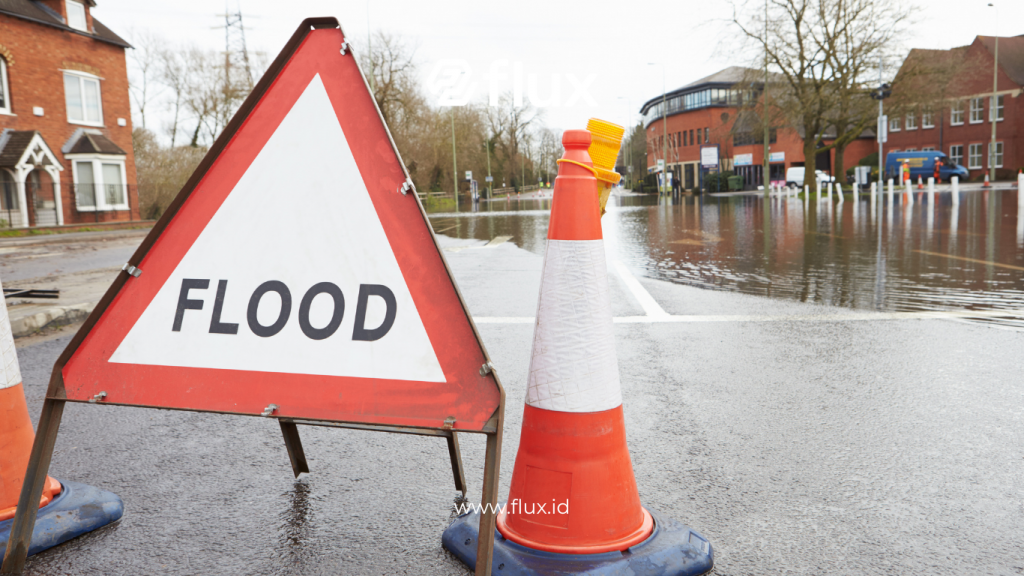Don't miss our holiday offer - 20% OFF!
Flooding is one of the most destructive natural disasters that frequently occur in various parts of the world. However, with technological advancements, the Internet of Things (IoT) now offers a solution to more effectively monitor and mitigate the impact of floods. By enabling real-time monitoring of environmental conditions, IoT allows disaster managers and communities to better prepare for floods. This article will discuss how IoT plays a role in flood detection and mitigation, as well as strategies that can be applied to resolve this issue.
Contents
IoT in Flood Detection

Read More: IoT Sensors for Flood Monitoring: Providing Real-Time Information for Quick Action
1. IoT Sensors for Water Detection
One of the key elements in flood mitigation is the ability to detect changes in water levels. Today, IoT sensors can be installed in rivers, canals, and reservoirs to measure water levels in real time. The data generated is sent to monitoring systems, which then provide early warnings to authorities and the public. This allows potential dangers to be identified earlier.
2. Humidity and Rainfall Sensors
In addition to water detection, humidity and rainfall sensors are also essential for predicting the possibility of floods. Data from these sensors enables the analysis of rainfall intensity that may cause flooding, especially in vulnerable areas. Consequently, preventive measures can be taken immediately.
3. Utilizing Drones for Monitoring
Besides sensors, drones equipped with IoT provide an efficient tool for visually monitoring large areas. Drones connected to sensors and cameras can send data on flood-affected areas directly to command centers. This speeds up decision-making and disaster response.
IoT Technology for Flood Mitigation

Read More: Using IoT to Prevent Flooding: Smart Solutions for Risk Management
1. Early Flood Warning Systems
IoT-based early warning systems play a crucial role in reducing the impact of floods. By analyzing data from sensors installed at strategic points, such as rivers and floodgates, these systems automatically send notifications via apps or text messages. Once the system detects approaching flood signs, early warnings are immediately dispatched, allowing communities to prepare.
2. Water Infrastructure Management
Besides early warnings, IoT is also beneficial in managing water infrastructure like floodgates and dams. Sensors installed on this infrastructure monitor water flow, soil tilt, and structural stability. If potential damage is detected, the system will automatically activate mechanisms that can reduce the risk of flooding, such as opening floodgates.
3. Optimizing Urban Drainage Systems
In urban areas, flooding is often caused by inefficient drainage systems. IoT can help tackle this issue by installing sensors in drainage channels to monitor water flow, detect debris volume, and measure water levels. With this information, maintenance actions can be taken before floods occur.
IoT Implementation in Flood Mitigation

Read More: Comprehensive Guide: Implementing IoT Sensors in Flood Monitoring for Quick and Effective Response
1. Collaboration Between Government and Private Sector
In implementing IoT technology, collaboration between the government and private sector is vital. Governments are responsible for providing adequate regulations and infrastructure, while the private sector can invest in IoT technology. With proper collaboration, flood mitigation through IoT can be carried out in an integrated and more effective manner.
2. Community Education
Besides technology, community education is equally important. Communities need to be trained to understand how to use flood warning apps and the mitigation steps they should take. With proper education, people will be more prepared and responsive when facing floods.
3. Funding IoT Projects
Of course, all these technologies require substantial funding. Therefore, financial support from governments, the private sector, and international organizations is necessary. This investment will ensure that the installed sensors function optimally and continue to develop for a better future.
Challenges in Implementing IoT for Flood Mitigation

Read More: Flood Anticipation with IoT, Direct Monitoring from Smartphone
1. Infrastructure Limitations
Although the benefits of IoT are significant, major challenges also arise, particularly in terms of infrastructure. In some regions, internet networks and power supplies are still limited, which hinders the installation of IoT sensors. Thus, there needs to be improvements to basic infrastructure for this technology to be applied across all areas.
2. Data Security
Data security is another challenge in IoT implementation. The data collected by IoT sensors is highly sensitive and must be protected from misuse. To address this, the development of advanced cybersecurity systems is necessary.
3. Operational and Maintenance Costs
Additionally, the operational and maintenance costs of IoT devices can be a barrier. IoT sensors require regular maintenance to function properly, adding to the financial burden on governments and companies managing the infrastructure.
Case Studies: IoT Implementation in Flood Mitigation Across Countries
1. Japan
Japan has successfully adopted IoT technology in flood mitigation. The country has installed sensors along rivers and dams to monitor water levels and rainfall. When there is a flood risk, the early warning system is immediately activated, and the public can quickly evacuate. Thanks to this technology, flood-related losses have been minimized.
2. The Netherlands
The Netherlands has also effectively implemented IoT in water management and flood mitigation. By using sensors installed on dams and rivers, the Dutch government can monitor water pressure and quickly identify potential hazards. This technology helps the country address flood risks even though it lies below sea level.
3. Indonesia
Indonesia, which frequently experiences floods, has also begun to implement IoT. In major cities like Jakarta, sensors are installed in drainage channels and rivers to monitor water flow. This system is connected to early warnings that help the government and communities take preventive measures more swiftly.
Conclusion
IoT innovation in flood detection and mitigation has shown great potential in enhancing preparedness and response to these disasters. As technology continues to evolve, IoT provides an effective solution for monitoring, managing, and reducing the impact of floods. Although challenges such as infrastructure limitations and maintenance costs remain, the benefits offered by IoT far outweigh them. With collaboration between the government, private sector, and communities, the flood mitigation strategy through IoT can be implemented comprehensively and sustainably.





